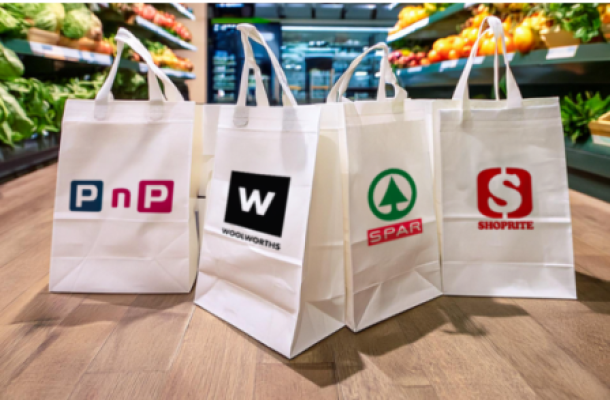Consumer brands must be prepared for change
A decade ago, many analysts looked at two looming trends — the rise of retail consolidation and the proliferation of private labels — and issued dire warnings about the power of consumer-packaged goods brands. Their predictions turned out to be premature.
Brands managed overhead costs aggressively, pursued dynamic growth in developing markets and gained scale, efficiency and entry to new markets through mergers and acquisitions — and now report 10-year high operating margins.
Of course, not all companies fared equally well. Nearly half of the highest-valued consumer goods companies in 1999 no longer ranked in the top 20 by market capitalisation last year. Also, between 2004 and 2014, the top three brands in major categories maintained top-three status in only 30% of US categories we studied.
Operating margins have reached a 10-year high. There is a lot of jostling among top companies and shifting category share. Will growth in operating margins continue on its trajectory, or will slowing market growth and intensifying investor pressures to reduce costs mark an end to the party?
Future headwinds may not differ drastically from past challenges. But the scale and complexity of today’s consumer goods companies heightens the importance of discerning what has worked in the past — and what will continue to work — while understanding the future trends that will inform new and critical choices.
WE SEE five ways companies can keep their brands thriving in the new era of profits.
• Ignite the top line. As developed markets remain somewhat stagnant and growth in developing markets slows, revenue growth may feel elusive. We see companies boosting their top lines by rethinking pricing strategies. In beverage categories, price increases accounted for more than 50% of household spending increases globally, 98% within North America, and 107% in Western Europe.
Despite pricing gains, volume growth remains hard to achieve. Winners will focus on three areas: building brand memorability, innovating with a focus on expanding consideration and penetration of hero brands (those with the highest potential to win with shoppers), and determining ways to convert shoppers where and when they make purchase choices.
A wine company made the radical decision to focus the majority of its resources on the 20 most promising stock-keeping units among the 400 in its portfolio in a particular European market. The results were dramatic: a 36% increase in volume, while the overall market saw a 5% volume drop.
• Plan to take out — and keep out — another 10%-30% of costs. Consumer goods companies have been successful in cutting costs in the past decade. But too often, costs creep back into their businesses within a few years.
The inability to make savings stick, and the increasing presence and power of activist investors, suggest that the best consumer goods companies will follow a different approach.
They will look at both the total amount spent and at the effectiveness of what they spend. By analysing total spend and spend effectiveness, one global brand discovered that more than half of its above-the-line marketing budget went to subscale and ineffective campaigns that ballooned nonworking media expenses.
By concentrating on fewer, better quality promotional campaigns, the company was able to reduce its below-the-line spending and fund higher-reach media spend.
• Reinvent your supply chain. There are two fundamental questions any consumer goods company should consider: Does the existing supply chain provide a demonstrable (and measurable) competitive advantage? Are all growth platforms, brands, and technologies on advantaged assets in optimal locations?
If the answer to either question is no (or unclear), it is probably time to reinvent the supply chain. The best companies will strive to have supply chains that are more aligned with their future commercial strategy. Instead of investing to maintain old manufacturing facilities, they will focus on building the capabilities that will serve their future market needs.
• Future-proof your capabilities. Technological innovations and shopping trends are transforming where and how consumer goods companies operate and build scale. Companies are aggressively discovering novel ways to use data to improve existing products and processes across the full value chain.
Brands now rely on digital insights tools that reduce both development cost and time, inform how to confront shoppers, and enable efficiencies in everything from truck-routing to availability and inventory management.
• Build agile teams. To grow in rapidly shifting markets, executives know they need to adapt their operating model for new strategies. Many are turning to an approach to product development that provides rapid feedback from internal and external customers to complement their traditional waterfall approach to longer-term projects.
They are speeding up time to market and lowering delivery costs by reducing dependence on business analysis and project management roles and by making better use of people and time.
In this so-called "scrum" approach, small, cross-functional teams collaborate with customers and consumers in an iterative process, relying on continuous, real-time testing and integration, instead of waiting until after development is final.
Brands improve their chances of quickly delivering products that customers want.
Winning in the next era means getting five things right. The best companies will fuel top-line growth with proven approaches such as strategic pricing, selective innovation, and a dedication to win where shoppers make decisions. It will be critical to take out costs and keep them from creeping back in.
Leaders will adapt their supply chains for future needs. They will build the capabilities required to win in the future, including advanced analytics to fuel insights and boost efficiencies. And the winners will hone their operating models to deliver strategies for new and changing markets.
That is how brands will continue to beat the odds.
• Merkel is a partner in Bain & Company’s Johannesburg office and Vishwanath is a partner in Bain & Company’s Boston office
News Category
- International retailers
- On the move
- Awards and achievements
- Legislation
- Wine and liquor
- Africa
- Going green
- Supplier news
- Research tools
- Retailer trading results
- Supply chain
- Innovation and technology
- Economic factors
- Crime and security
- Store Openings
- Marketing and Promotions
- Social Responsibility
- Brand Press Office
Related Articles

Checkers Sixty60 wipes floor with Pick n Pay As...

Top tips for consumers to combat escalating ele...

Clear winner in South African retail battle

Drinks survey reveals Rooibos as a top choice a...


